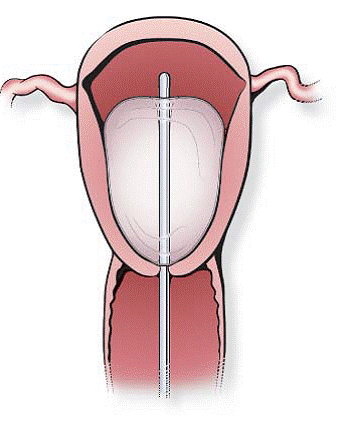Conference Lectures
Obstetric haemorrhage: Current recommendations for management
 Dr Bande B D
Dr Bande B D
Senior Consultant, Anaesthesiology, medicine and Critical care,
K E M Hospital, Pune.
Obstetric haemorrhage is the leading cause of maternal mortality worldwide. In the most recent report of the Confidential Enquiries into Maternal Death in the UK for the triennium 2006-2008, there was a decrease in the haemorrhage-related mortality rate to 0.39/100,000 from 0.66/100,000 maternities in the previous triennium. Obstetric haemorrhage and its associated complications are also a leading obstetric specific cause for maternal admission to ICU with a rate of approximately 0.7/1000 deliveries.[1]
It is variably defined as: blood loss >1500 ml; a decrease in haemoglobin >4g/dl; or acute transfusion requirements >4 units. The gravid uterus receives up to 12 % of the cardiac output, thus obstetric haemorrhage can be unexpected and rapidly become life threatening. [2]
Classification of Obstetric haemorrhage:
Antepartum haemorrhage (APH)
This is bleeding after 24 weeks gestation and before delivery.
Causes: Placental abruption
Placenta praevia
Trauma
Uterine rupture
Primary postpartum haemorrhage (PPH)
This is defined as blood loss within 24 hours of delivery, which is >500 ml following a vaginal delivery and >1000 ml following a Caesarean section.
Causes :Uterine atony,
Retained products of conception,
Genital tract trauma,
Clotting defects,
Inverted uterus,
Secondary postpartum haemorrhage
This is blood loss later than 24 hours after delivery.
Causes :Retained products of conception
Puerperal sepsis
Principles of Management of antepartum hemorrhage
Placenta accreta is a rare condition associated with placenta praevia and encompasses a spectrum of pathologies characterised by abnormal placental invasion into the uterine wall.
Placenta accreta - placental villi embeded into the myometrium
Placenta increta - placental villi embeded through the depth of the
myometrium
Placenta percreta - placental invasion through the myometrium and uterine
serosa, occasionally invading neighbouring viscera (e.g. bladder)
Management of placenta increta and percreta is multidisciplinary and may require interventional radiology, and/or general and vascular surgical input. Ideally patients are delivered by elective Caesarean section with the above support and critical care available. Although these conditions are more frequently diagnosed antenatally using ultrasound and/or other radiology techniques such as MRI, occasionally they are only diagnosed at the time of delivery. [3]
Evaluation of post-partum haemorrhage
An organised approach to evaluating the patient with PPH is critical to making
treatment decisions. Key features of initial assessment should be:
Focused medical/obstetric history to rule out any potential causes of PPH
Examination to assess uterine tone and to rule out genital tract trauma or
retained placenta.
Continual re-evaluation of the patient’s haemodynamic state includes assessment of:
Blood loss (notoriously difficult post delivery)
Heart rate
Blood pressure (invasive/noninvasive)
Mentation
Capillary refill/tissue turgor
Urine output
Acid-base status/lactate concentration
Early and repeated laboratory investigations are essential to help guide the maternal resuscitative effort:
Full blood count
Urea/electrolytes and creatinine concentration
Coagulation profile
Blood group Typing and cross matching
ABG (arterial blood gas): Acid-base status and gas exchange
Principles of Management of postpartum hemorrhage
- PPH can be anticipated or unanticipated. Detection of concealed haemorrhage is vital.
- Active management of the 3rd stage of labour decreases bleeding.
- There are several uterotonic drugs that can be used in combination.
- Control of bleeding is paramount and management is multidisciplinary.
- Prevention of hypothermia is imperative.
- Intraoperative cell salvage appears safe to use in obstetric patients.
- Interventional radiology may be useful in some cases although there are reports of adverse fetal and maternal outcomes.
- Rebound hypercoagulability is an important cause of death and thromboprophylaxis should be initiated early.
PPH : WHO recommendations, 2012
- IV oxytocin 10 U, Infusion 40 U in 500 ml,
- IV ergometrine 0.5 mg,
- Sublingual misoprostol, 800 µg,
- Carboprost 0.25mg IM every 15 minutes x 8 doses
- Isotonic crystalloids in preference to colloids,
- Tranexamic acid if oxytocin and other uterotonics fail to stop bleeding or if it is thought that the bleeding may be partly due to trauma. Tranexamic acid, an anti-fibrinolytic agent, is recommended in cases unresponsive to uterotonic agents or in cases where bleeding is related to genital tract trauma. These recommendations are based on use in the surgical patient where it has been shown to reduce volume of blood transfusion. The recommended dose in the setting of PPH is 1g IV repeated 4 hours later.[4,5]
Temporizing measures:
- Bimanual uterine compression,
- Intrauterine Bakri balloon inflation
Uterine balloon tamponade is an effective first line surgical approach to intractable PPH which works by way of compressing bleeding spiral arteries against the uterine wall (see Fig. below). This approach has evolved from a similar effect caused by uterine packing with thrombin-soaked gauze packs. There is potential for infection with this approach and prophylactic antibiotics are administered.
Fig. Correct intra-uterine position of an inflated Bakri-balloon
- External aortic compression,
- Non-pneumatic anti-shock garments,
- Uterine artery embolization if resources available.[6]
Surgical interventions:
- Brace suture ( B – Lynch ),
- Uterine artery ligation,
- Internal iliac artery ligation,
- Hysterectomy before it is too late.
Resuscitation and Anaesthetic management of peripartum hemorrhage:
- Volume resuscitation with warm crystalloids and colloids,
- Jump start approach in transfusion of blood products :
In cases where bleeding is massive, restoration of circulating volume with universal donor (O negative) blood may be required while waiting for cross-matched blood to become available. All blood products should be administered via a blood-warmer and appropriate filter. Blood products such as fresh frozen plasma (FFP), platelets and cryoprecipitate or fibrinogen concentrate should be administered as required.
- Attend to hypothermia and metabolic problems and patient transfer.
- Recombinant factor VIIa is not recommended by the World Health Organization as a validated therapeutic strategy for PPH.
Anaesthetic Management
General Anaesthesia is obvious choice and is usually with agents like ketamine, opioids, benzodiazepines, long acting muscle relaxants and local anaesthetic infiltration if required. [7] [8]
References :
- Pollock W, Rose L, Dennis CL. Pregnant and postpartum admissions to the
intensive care unit: a systematic review. Intensive Care Med 2010;
36(9): 1465-1474.
- Levy D M; Emergency caesarean section : best practice; Review article; Anaesthesia, Vol 61, Aug 2006, Page 786,
- Jauniaux E, Jurkovic D. Placenta accreta: pathogenesis of a 20th century iatrogenic uterine disease. Placenta 2012; 33(4): 244-251.
- Henry DA, Carless PA, Moxey AJ, O’Connell D, Stokes BJ, Fergusson DA, et al. Anti-fibrinolytic use for minimising perioperative allogeneic blood
transfusion. Cochrane Database Syst Rev 2011; (3): CD001886.
- Ducloy-Bouthors AS, Jude B, Duhamel A, Broisin F, Huissoud C, Keita-Meyer H, et al; EXADELI Study Group, Susen S. High-dose tranexamic acid reduces blood loss in postpartum haemorrhage. Crit Care 2011; 15(2): R117.
- Bloom AI, Verstandig A, Gielchinsky Y, Nadiari M, Elchalal U. Arterial
embolisation for persistent primary postpartum haemorrhage: before or
after hysterectomy? BJOG 2004; 111(8): 880–884.
- Snegovskikh D, Clebone A, Norwitz E. Anesthetic management of patients with placenta accreta and resuscitation strategies for associated massive
hemorrhage. Curr Opin Anaesthesiol 2011; 24(3): 274-281.
- Wise A, Clark V. Challenges of major obstetric haemorrhage. Best Pract Res Clin Obstet Gynaecol 2010; 24(3): 353–365